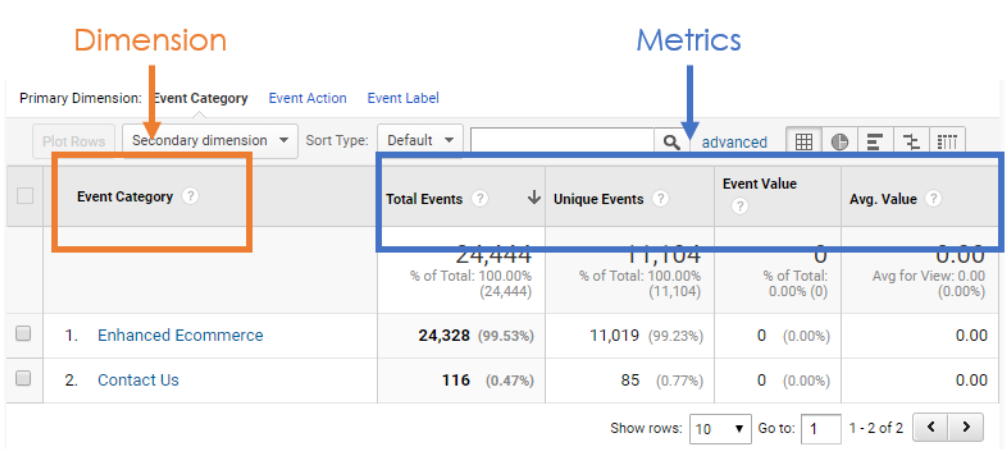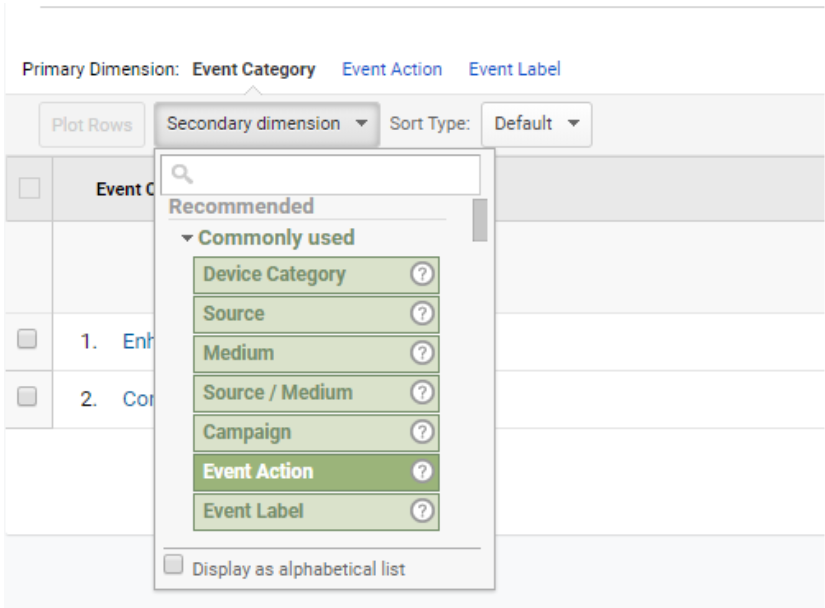Secondary Dimension in Google Analytics: Unlocking Advanced Metrics
Secondary Dimension in Google Analytics: Unlocking Advanced Metrics
Blog Article
Make The Most Of Coverage Accuracy With Second Measurement in Google Analytics
Comprehending exactly how to maximize reporting accuracy with secondary measurements in Google Analytics can significantly improve the depth of understandings acquired from data analysis. By integrating additional dimensions tactically, online marketers can reveal hidden patterns and correlations that may not be promptly obvious when assessing key metrics alone.
Recognizing Second Measurements in Google Analytics
Secondary dimensions allow individuals to segment and further explore data beyond the key dimension picked. While the key measurement might display the total number of page views, adding a secondary dimension such as 'source/medium' can supply understandings right into where the website traffic originated from.
Additionally, recognizing secondary measurements is crucial for producing more tailored records customized to certain service objectives. By selecting the ideal mix of primary and secondary measurements, experts can uncover patterns, trends, and correlations that may otherwise continue to be surprise. This nuanced strategy to data analysis equips organizations to make enlightened choices based on an extensive understanding of customer habits across various measurements.

How to Use Additional Dimensions
When leveraging secondary measurements in Google Analytics, the functional application includes choosing certain information criteria to more fine-tune insights beyond the key measurement's extent. To apply additional measurements effectively, begin by accessing the report or dataset where you desire to dive deeper into the information. Within Google Analytics, find the main dimension that you are currently analyzing. As soon as recognized, click the dropdown menu classified "Secondary Measurement." This action will expose a list of extra criteria that can be contributed to your evaluation. Pick the additional measurement that lines up with your analytical objectives, such as 'Source/Medium,' 'Device Classification,' or 'Area.' By selecting an additional dimension, you can obtain a lot more comprehensive insights right into user actions, demographics, or acquisition channels. Keep in mind that secondary dimensions aid give context and granularity to your main dimension information, allowing you to extract more purposeful and actionable insights from your Google Analytics reports.
Leveraging Additional Dimensions for Insights
Making use of secondary dimensions in Google Analytics allows for a more comprehensive analysis of information, supplying valuable understandings beyond the main dimension's scope. By leveraging second dimensions, customers can dig much deeper right into the performance metrics of their internet site or app, discovering surprise patterns and trends that might not be instantly obvious when just considering primary dimensions.
One trick advantage of utilizing additional dimensions is the ability to section and filter information more precisely. This can assist experts and marketers better understand the habits of certain customer segments, such as new site visitors versus returning site visitors, or website traffic coming from various geographical you could check here areas.
Additionally, additional measurements make it possible for customers to contrast and comparison various information factors within the exact same report, offering a much imp source more all natural view of performance (Secondary Dimension in Google Analytics). As an example, combining the key measurement of landing pages with secondary dimensions like demographics or devices can reveal which web pages are most reliable in involving individuals on different devices or from various demographic groups.
Essentially, leveraging additional measurements in Google Analytics empowers individuals to remove richer understandings from their information, leading to even more informed decision-making and ultimately, boosted efficiency.
Best Practices for Second Dimensions
When evaluating information in Google Analytics, integrating secondary measurements effectively boosts the depth of understandings originated from the main metrics. To make the most out of second dimensions, it is essential to comply with ideal practices that guarantee significant and accurate coverage. Firstly, it is essential to select additional dimensions that line up with the primary metric you are analyzing. Choosing appropriate second measurements helps in supplying context and a more clear understanding of the data being taken a look at.
Moreover, it is recommended to limit the number of additional measurements made use of in a single report to prevent frustrating the analysis with as well much info. Concentrating on a couple of vital secondary dimensions each time can cause even more actionable and concentrated understandings. In addition, think about try out various mixes of key and second dimensions to discover distinct patterns and patterns that may not be obvious when looking at the information alone.
Advanced Analysis Methods With Second Dimensions
Checking out intricate information connections with the strategic application of secondary measurements can reveal nuanced insights that raise the depth of evaluation This Site in Google Analytics. By combining additional dimensions with key information sets, innovative analysis strategies can be employed to remove important details.
Moreover, secondary dimensions can improve the evaluation of conversion courses by offering added context. Recognizing the various touchpoints a customer engages with prior to converting can be essential in enhancing the consumer journey - Secondary Dimension in Google Analytics. By utilizing secondary measurements to delve right into specifics such as traffic sources or tools utilized, marketing experts can customize methods to target high-converting networks successfully
Conclusion

To improve information evaluation and gain deeper insights right into customer habits, recognizing additional measurements in Google Analytics is crucial - Secondary Dimension in Google Analytics. Second dimensions enable individuals to sector and further explore data beyond the main measurement chosen. While the primary dimension might present the total number of page sights, including a second dimension such as 'source/medium' can offer insights into where the web traffic stemmed from.When leveraging second dimensions in Google Analytics, the sensible application entails picking certain data specifications to more improve understandings past the primary measurement's range. Keep in mind that additional dimensions help offer context and granularity to your primary dimension data, allowing you to remove even more purposeful and workable insights from your Google Analytics reports
Report this page